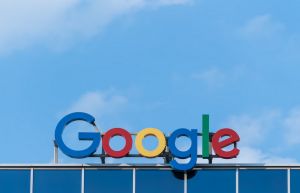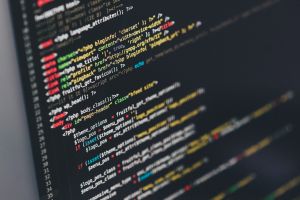As a long-standing partner, Renault is strengthening its ties with Google Cloud around two axes: connected vehicles by creating a specific OS based on Android and the extension of digital twins to all of the automotive group's activities to develop future uses.
New technologies sequence for Renault, which yesterday unveiled its strategic plan by highlighting advanced partnerships including with Google Cloud around the connected vehicles of tomorrow via its subsidiary Ampere (electric vehicle and software), but also on the digital transformation of the company. The two companies know each other well and have been working together since 2018 with a first agreement on the Android Automotive OS integrated into cars (including the Mégane E-Tech). In 2020, it had been strengthened around a particular business need: paint optimization on vehicles. The automotive group used Google's computing power and artificial intelligence and machine learning processing to meet this task. The result was expected to be energy savings of 10 to 20%.
The creation of a dedicated and standardized OS
Today, the partnership is moving up a notch around two pillars: the vehicle and the company's digital transformation. On the first point, "we want to go further than just integrating Android Automotive by creating a real operating system for the vehicle," says Frédéric Vincent, Renault's CIO. He adds, "There is very little standardization in this area. Today, we have to deal with 80 to 60 ECUs and 5 to 7 domain controllers. For each new service, we have to make changes to the hardware. For example, it takes two years to create a virtual key.
Hence the idea of having a standardized and open digital architecture that the manufacturer calls SDV (Software Defined Vehicle). The Android-based platform will manage the middleware and applications. "The specifications are demanding, the platform must be long term with support over ten years, scalable to accommodate future services, open to facilitate the connection with the data and be offered to other OEMs," continues the CIO. The first results of the partnership, which also includes Qualcomm on the component part around Snapdragon, are expected by 2026 with the release of FlexEVan.
A generalization of digital twins
Obviously this pillar could not work without the help of the second axis of the agreement around the continuation of the carmaker's digital transformation and in particular digital twins and the cloud. "On the digital twin, we started on the production plants and this has proven to be a great asset to adapt the lines according to the shortage of components. We now need to go further by creating digital twins for all the group's activities," says Frédéric Vincent. To achieve this, the manufacturer will accelerate its "move to cloud" strategy initiated in 2017.
"We are clearly committed to a cloud first approach, there is no new development today that is not done in the cloud. But Renault is a 120-year-old company with a significant application heritage. We are therefore remaining pragmatic about this migration," says the CIO. He adds, "the challenge for the company is to get rid of the skills on the infrastructure, both on the network and on the storage. Hence the preferred partnership with Google Cloud. The IT teams of the manufacturer prefer to focus on the development of new services from the collection and analysis of data. "The first work is focused on predictive maintenance of vehicles," says Thierry Cammal, general manager of Renault Software Labs. But the group is looking at other uses, such as bridges with insurance companies, which can adapt their offers according to driving data. Renault will therefore provide information on drivers, who will see their premiums rise or fall.
IT salaries: The 5 highest-paying jobs in 2023
A recent study predicts increases next year in most digital occupations in France. Among the roles that are expected to benefit, developers, network administrators, product designers and cyber specialists rank high due to higher demand.
On the occasion of the publication of its 2023 Salary Guide, the recruitment firm Robert Half expects salaries to increase compared to the current year for most IT and digital jobs. In this French ranking, five functions stand out in the information systems, digital and commercial categories. Code professionals are always in high demand and will still be in a strong position during salary negotiations. As a result, an entry-level development engineer will earn €40,000 in gross annual compensation in 2023 and up to €60,000 if he or she has advanced expertise. Lead developers are expected to do even better, with salaries ranging from €55,000 (low end) to €80,000 (high end) next year.
Robert Half also forecasts salary increases in systems and network administration and product design (between €40,000 and over €55,000 respectively, depending on the degree of expertise). The same is true for the IT security sector, where the pay slip shows €50,000 for a cyber specialist at the beginning of his or her career and up to €70,000 for an experienced profile. In the sales disciplines, IT sales managers (or sales executives) will also be among the 5 best valued professions with an average salary of between €45,000 gross per year (for a junior profile) and €70,000 (for a senior profile).
IT projects at the heart of priorities
After the economic situation of companies plummeted at the beginning of the health crisis, the recovery seems to be here. Thus, CIOs show a high level of optimism supported by the investment in IT projects and their deployment over the past two years. 73% are more confident about their company's growth prospects for the coming year than they were last year (compared to 60% in 2021).
Increased financial resources and budgets (49%), increased headcount (42%), and expanded business opportunities (40%) explain this paradigm shift. Against this backdrop, 89% of IT departments plan to recruit in the coming months, and nearly a third (31%) anticipate creating new positions. However, they say they are held back by a shortage of technical profiles, leading to increased competition.
Recruitment difficulties set to continue
Indeed, 90% of CIOs expect it to be as difficult or more difficult to recruit in 2023 than in 2022, while 49% believe it will be more difficult. 68% are concerned about their ability to attract the best candidates. The salary criterion cited by 40% of respondents is the number one concern when it comes to attracting talent. Their main concern? Seeing their best talent being poached (36% of respondents). Logically, CIOs' recruitment challenges focus on their ability to identify and secure the most qualified profiles. As evidence of this, 34% cite finding talent with the right skills as the number one issue. Another 31% cite the ability to compete.
One of the highest turnover rates in the market
When asked which categories are the most difficult to find, 36% of IT managers mention cybersecurity, 34% cite network management, while 33% point to cloud and infrastructure. CIOs are also looking for the soft skills needed to drive and advance projects. The preferred qualities are teamwork (31%), as well as motivation and adaptability (26% respectively). For Quentin de Beaufort, Director at Robert Half France, IT specialists will continue to be under pressure in 2023, as the shortage of profiles is still strong, as are the needs of companies. Not to mention the fact that this field is not spared by a phenomenon of high turnover.
"More than a third of CIOs (34%) have seen an increase in turnover over the past year," says the executive. "The importance given to recruitment strategies will be essential to attract and retain talent, he recommends. It will be necessary to play on the salary criterion of course, but also to meet the requirements of candidates in terms of flexibility, but also of corporate culture, which are particularly strong for these profiles," he concludes.
In terms of popularity, Python, Java and C++ still occupy the top three spots in Anywr's ranking of the most used computer languages. But with the arrival of low/no-code technologies, this ranking could change rapidly, driven by the challenges of the developer deficit and the ecological transition
ompanies will place more and more importance on no-code technologies to cope with the shortage of developers and energy challenges. This is the main finding of Anywr (formerly Cooptalis) in its latest barometer of the most in-demand IT languages. To carry out this survey, the platform specialising in the recruitment and placement of candidates analysed a sample of more than 1,000 international job offers in the IT professions between January and September 2022. The results reveal two trends. On the one hand, a concentration of companies' needs and projects around a few languages and uses. On the other hand, recruiters are increasingly interested in automation platforms. In this ranking, it appears that the six languages that came out on top, namely Python, Java, C++, Javascript C and PHP, alone represent 50% of the job offers analysed. As a reminder, according to the State of the Octoverse report published by Github every year, there are 370 computer languages commonly used in the world and to which developers regularly contribute. The concentration phenomenon is therefore particularly marked here.
A timid but noticeable arrival of Rust
However, the study indicates that despite its number one position, Python is regularly singled out as a major resource consumer. As a result, it could give way to certain outsiders, notably Rust, which came in 22nd position and is considered to be high-performance and less memory-hungry. In addition, the trend towards low or no code technologies, which allow applications to be developed without mastering the usual computer languages, is likely to gain ground given the growing shortage of developers. This phenomenon could turn this ranking upside down in the years to come, warns the recruitment platform.
In the meantime, Python remains the big winner in terms of popularity, despite its low speed and high memory consumption. The reasons for its success are its numerous development possibilities in machine learning, AI, big data, data science, video games, robotics and cybersecurity. Ease of use and learning, various frameworks and a very active community also explain its growth. In this trifecta, we find Java in second place. The native language of Android has been in the top three for a very long time. For its part, C++ has made a strong comeback, reaching third place in the ranking, where it has been in the top 10 computer languages since 1986.
Still a strong need for IT development
After the leading group of general-purpose languages, come the technologies associated with more specific uses - SQL and NoSQL for databases, HTML, CSS or JavaScript for hypertext - and those more recent and particularly recommended by certain operating systems for coding native applications, such as Kotlin for Android. For the time being, before these possible changes, the continuing digital transformation of companies and the persistence of needs for website development (back and front end), web and mobile applications, combined with the acceleration of IT projects linked to the exploitation of data, explain the order of appearance of programming languages in this ranking.
Source: www.lemondeinformatique







